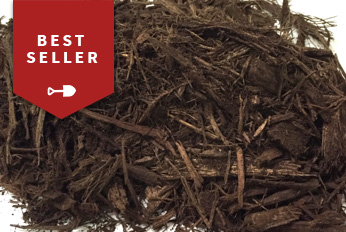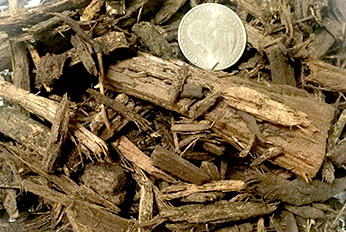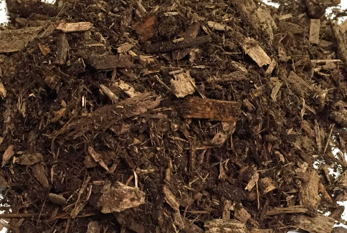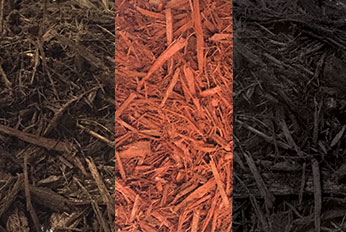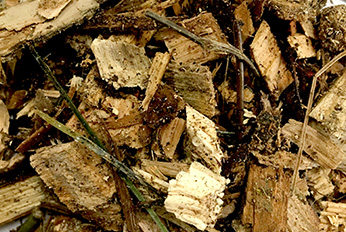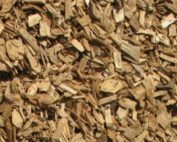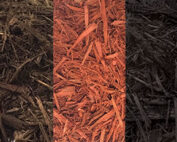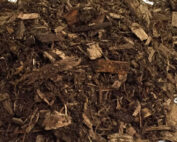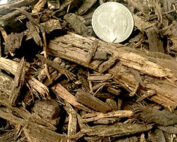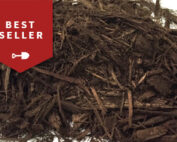Bulk Mulch and Mulch Delivery Near Barrington
Down to Earth is your one-stop shop for everything mulch. We have been manufacturing mulch for over five years and take pride in the quality of our mulch products. We provide mulch delivery to Barrington and the surrounding area. Order now or contact us for bulk mulch inquiries.
We sell our mulch at a competitive price because we manufacture it on-site.
Watch our manufacturing process.
Contact us today 847.426.1150.
Mulch Products
Ask about wholesale pricing. One yard equals four to five barrows.
Frequently Asked Questions About Mulch or Mulching
What is the cheapest way to buy mulch?
The cheapest way to buy mulch is to purchase it in bulk from a landscaping supplier rather than buying individual bags from retail stores. Buying mulch by the cubic yard usually offers significant savings per unit. Another affordable option is to obtain free or low-cost mulch from your local municipal yard waste or community recycling programs. Additionally, you can share bulk orders with neighbors to reduce individual costs.
What month is the best time to mulch?
The best time to mulch is typically in early to mid-spring (April or May), once the soil begins to warm and after initial weeds are removed. Spring mulching helps retain moisture, control emerging weeds, and regulate soil temperature as the growing season starts. Fall mulching (October to November) is also beneficial, providing protection for plant roots against winter frost.
What is a major downside to mulching?
A major downside to mulching is the risk of applying it incorrectly. Specifically, adding too much mulch (often referred to as “mulch volcanoes”) can suffocate plants by limiting airflow and retaining excessive moisture, leading to fungal diseases and root rot. To avoid problems, mulch should be applied in moderation, typically 2 to 3 inches deep. Keep mulch several inches away from plant stems and tree trunks.
What type of mulch should I avoid?
You should generally avoid rubber mulch and heavily dyed wood mulches. Rubber mulch can release harmful chemicals into the soil and doesn’t improve soil health. Cheap dyed mulch may contain contaminants such as recycled wood from pallets that can leach chemicals. Additionally, fresh, unaged organic material (like fresh grass clippings or wood chips) should be avoided unless composted first, as it can deplete nitrogen from the soil.
Should you remove mulch every year?
No, it’s usually unnecessary to completely remove mulch each year. Mulch naturally decomposes, enriching the soil. Instead, simply rake or fluff existing mulch annually and add fresh mulch on top to maintain the optimal depth. Only remove old mulch if it has developed mold, fungal issues, or become compacted and excessively thick.
Should I water mulch after putting it down?
Yes, watering mulch lightly after application is recommended. This helps settle mulch in place, preventing it from blowing away or shifting. Watering also activates its moisture retention properties, allowing water to reach the soil beneath more effectively. Avoid excessive watering; just a gentle soak to stabilize it is sufficient.
Does mulch attract termites?
Mulch itself does not actively attract termites, but it creates moist conditions that termites find attractive. Termites prefer moist, cool soil conditions beneath mulch. If termites already exist in your vicinity, they may inhabit mulched areas. To minimize termite risk, keep mulch a few inches away from foundations or structures, and consider using naturally termite-resistant mulch types like cedar or cypress.
What is the best mulch?
Shredded hardwood bark mulch (like double-shredded hardwood) is often considered the best general-purpose mulch. It looks attractive, stays in place well, retains moisture, and enriches soil nutrients as it breaks down. Cedar and cypress mulches are also excellent due to their natural resistance to insects and slow decomposition. The ideal mulch depends on your garden goals: pine straw for acidic plants, straw for vegetable beds, and bark mulch for ornamental beds.
Is brown or black mulch better?
Neither brown nor black mulch is inherently better. It depends on your landscaping goals and local conditions. Brown mulch looks natural and doesn’t absorb excessive heat, making it suitable for sunny areas. Black mulch offers a striking visual contrast, enhancing landscaping aesthetics, but it absorbs more heat, which may stress plants in full sun. For areas with intense sunlight, brown mulch is generally safer for plants.
How many inches of mulch is best?
Applying mulch 2 to 4 inches thick is optimal for most gardening purposes. Two inches effectively controls weeds and conserves moisture without smothering plant roots. In areas around trees or shrubs, 3 to 4 inches is acceptable, but avoid deeper layers as they can restrict air and water flow, causing plant stress and root rot.
Is there something better than mulch?
Traditional mulch is highly effective, but alternatives can meet specific goals. Groundcover plants (green mulch) can be better for long-term weed control and aesthetics. Compost can improve soil nutrients faster than mulch alone. Gravel or stone mulch lasts indefinitely, making it ideal for low-maintenance landscapes, but it won’t enrich the soil. The best choice depends on your garden’s needs: organic matter for soil health, stones for longevity, or living plants for beauty.
Which mulch lasts the longest?
Inorganic mulches, like gravel or stone, last longest, essentially indefinitely, as they don’t break down. Among organic mulches, cedar and cypress bark last longest, typically around 3 to 5 years, due to their slow decomposition rates. Large bark nuggets also break down slowly, making them good options for gardeners who want lasting organic mulch.
How to mulch cheaply?
You can mulch cheaply by sourcing free or inexpensive local materials. Use yard waste like fallen leaves, dried grass clippings, or cardboard. Local municipal recycling centers often provide free or low-cost mulch from community-collected yard waste. Purchasing mulch in bulk from local landscaping suppliers rather than individual bags also significantly reduces costs.
Can I use fresh grass clippings as mulch?
Fresh grass clippings can be used as mulch, but with precautions. Spread them thinly to prevent matting and decomposition problems. Thick, wet layers can form a slimy barrier, blocking water and air. It’s best to dry clippings or mix them with other mulch materials. Avoid using clippings treated with herbicides or pesticides that could harm your garden plants.
Do you need to remove grass before mulching?
Yes, it’s generally recommended to remove or kill existing grass before applying mulch. Grass covered with mulch without preparation often reemerges through the mulch layer. To avoid this, remove grass manually or cover the area with cardboard or newspaper to smother it before mulching. This ensures effective weed control and creates better conditions for plants.
Does putting grass clippings on bare spots help grass grow?
Grass clippings can help grass grow on bare spots by retaining moisture and adding nutrients as they decompose, creating favorable conditions for new grass seeds to germinate. However, grass clippings themselves do not contain seeds, so bare patches will need overseeding to grow new grass effectively. Clippings are beneficial when used together with reseeding or plugging to encourage rapid lawn recovery.
Can you use leaves as mulch?
Yes, leaves are excellent mulch materials, particularly if shredded first. Shredded leaves suppress weeds, insulate the soil, conserve moisture, and enrich soil nutrients as they decompose. Unshredded leaves can form dense mats, potentially causing water drainage issues. It’s best to run leaves over with a mower to break them down before mulching.
What is the fastest way to turn leaves into mulch?
The quickest method to turn leaves into mulch is to mow over them with a lawnmower equipped with a collection bag. This instantly shreds leaves into smaller pieces suitable for immediate use as mulch. Shredded leaves decompose faster, enriching the soil more efficiently, compared to whole leaves that decompose slowly.
Are pine needles good mulch?
Yes, pine needles are excellent mulch, especially for plants that prefer acidic soils (like blueberries and azaleas). They interlock and stay put well, making them suitable for slopes. Pine needles decompose slowly, requiring only yearly replenishment, but their mild acidification may affect certain plants in alkaline soils. Choose pine needles when mulching acid-loving plants for optimal results.
Should I put dead leaves in soil?
Yes, incorporating shredded dead leaves into garden soil enriches the soil by adding nutrients and organic matter. Mixing shredded leaves into soil enhances soil structure, fertility, and microbial activity. However, avoid burying large quantities of whole leaves at once, as decomposition may slow down. Shredded leaves mixed in moderately will effectively break down by spring, significantly benefiting the garden soil.

